The Rise, Fall and Rise of Wearables:
Everyday the smart phone in your pocket and smart watch on your wrist measure, collect and send mountains of health and activity data; steps, stairs climbed, activity minutes, sleep phases, average heart rate and much more.
This is the activity Tracking paradigm.
Experts have said; “About one third of people who buy fitness trackers stop using them within six months, and more than half eventually abandon them altogether.” and “Collecting information is one thing. Presenting it in a way people find comprehensible, motivating, and actionable is another.”[i]
Tracking means:
- numbers,
- numbers that are often hard to understand,
- those numbers often don’t make things better or positively change behaviour
- and concepts like 10,000 steps per day are repetitive – you do the same thing over and over irrespective of other ‘real life’ factors like fatigue, illness and a stacked schedule.
But things are changing.
Now driven by opportunities in Digital Healthcare, we see a new wearable paradigm emerging where human experts (and A.I.) are digitally connected to users’ wearables making sense of their personal data to provide accurate and ‘best course of action’ advice.
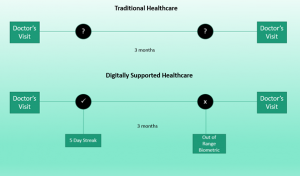
Figure 1. Example of Further Consultation Points (black ticked circles above) by a Healthcare coach in the Digital Healthcare Model Utilising Wearables
You could say we’re moving from the Information Age, which displays a ‘mountain’ of data, into the Age of Intelligence where you recieve the only piece of information you need within that ‘mountain’. Things are getting smarter!
We have been waiting a long time for it’s arrival.
The Smart Tracking paradigm is here.
I say smart because something valuable, personal and actionable is produced based on the wearable data presented.
When Fitbit appeared in 2009, it ‘started’ the wearable revolution but interestingly, the world’s first wearable step counter (the Japanese manpo-kei) dates back to the 1960s and biometric wearables started way back in 1977 in sport with the invention of the wireless heart rate monitor.
What this means is that ‘making sense of wearable data’ is not so new and many sports scientists like ourselves have been thinking about and working on the problem for many decades.
And the problem is 2 sided:
- The user wants easy actionable effective advice
- and the doctor or trainer does not want to receive mountains of data either. They want the data processed in a way that they can make a fast-accurate decision.
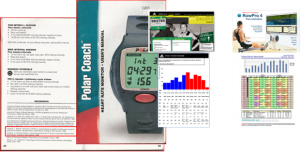
Figure 2. Our History: Assisted in Development of the first Digital Coaching System with Polar (1998), One of the First Online Exercise Planning Systems with Adidas (2007) and the First Application of Exercise Planning and Monitoring to Indoor Rowing with Digital Rowing/Concept 2 (2003).

Figure 3. Our Collaboration with Intel and Oakley to Create One of the First Hearable Exercise Systems (2014) with Automatic Activity Detection, Virtual Coaching and Natural Language Processing for Two Way Communication.
Whether you’re a health practitioner or a sports scientist, when you’re sitting at your computer looking at remotely acquired activity data, you quickly realise that to advise correctly, between you and the data, you need to be able to answer 3 questions that the user always asks:
- What should I do? (advice or plan)
- What did I do? (measure compliance to the advice/plan)
- How did I do? (measure of success in movement towards the goal)
3 Questions That Highlight the Most Important Wearable Algorithms:
1. What Should I Do? – the Plan
The patient/user needs something that outlines a method to achieve a goal. They need a logically constructed scientifically sound plan.
Performance Lab has spent 3 decades working on this and our program generator actually writes a personalised 6 – 14 week exercise program as opposed to
- manually building a plan piece by piece
- or using cookie cutter templates.
Curently 13 different forms of exercise (e.g. walking, gym classes, cycling, crossfit, rehab) can be housed within the plan generator that per form of exercise, can each build over 90,000 variations quickly and effectively.
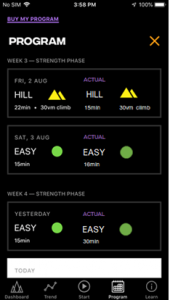
Figure 4. Performance Lab Proprietary Plan Generator on a Mobile Phone.
Overlaying this planner is a facility allowing a user to cancel, move or adjust a workout or week of exercise. The adaptive planner will then automatically use the rules of perisodiation to reoptimise the plan.
The doctor or trainer can quickly and accurately answer the ‘what should I do?’ question.
2. What did I do? – Detecting Activity and Measuring Compliance
a. Clean the Data (Get Rid of Erroneous Data):
Firstly, erroneous data will effect algorithms, which effects decisions, which effects outcomes. No brainer really. Filters automatically make sure the data is clean.
b. Identifying ‘Hard’ – Establish Effort Zones
Secondly, when measuring human activity, intensity is a key component. What is ‘hard’ or intense effort wise for me may not be the same for you. We have widely different physiologies and abilities.
Our algorithms search for physiological patterns within a user’s everyday activity data and automatically identify effort zones. We know your personal effort boundaries; we know what your ‘easy’ is, we know what your ‘moderate’ is and we know what your ‘hard’ is.
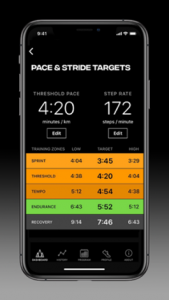
Figure 5. Performance Lab’s Proprietary Effort Zone Calibration System
c. Effort + Context = Activity Detection
Now that we can accurately ascertain your effort zones, we can now attach other contextual variables like the activity, environment and valuable physiological values and label it as a particular ‘something’. We take a tangle of data like this…

Figure 6. Graph Showing Coloured Activity Detection Blocks (Grey, Green, Red, Blue) That Automatically ‘Make sense’ of a Chaotic Tangle of Exercise Data
…and turn it into distinct blocks (you see at the top of Fig. 6) describing detected activity. These blocks are packaged up and contain all the parameters (e.g. heart rate, terrain, temperature, blood pressure) for deeper investigation by an expert or algorithm. The data blocks are also rigidly constrained ensuring that current ‘like’ data can be compared to past ‘like’ data.
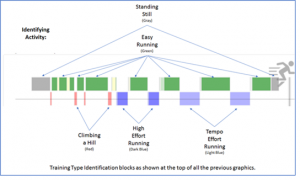
Figure 7. The Same Coloured Activity Blocks As Figure 6. and What They Mean. Performance Lab’s Patented Contextual Classification and Activity Detection Methods Used for Example in Running.
d. Plan + Activity Detection Means Compliance
Because we have a measure of
- what the patient/user did (Activity Detection)
- and what they should have done (the Plan),
we can now measure compliance to the plan to find out if the user followed the advice.
The two key pieces of the ‘action’ are in place, the Doctor or Trainer can answer the ‘what did I do?’ question. Now let’s measure the ‘reaction’.
3. How did I do? – Success or Progress to the Goal
Finally, we need to know whether the completed activities scheduled in the plan have created the anticipated improvements.
In cases like fitness and health, this is aided by the Cardio Status monitor which provides information on fitness improvement, implied illness, stagnancy, fatigue, prescribed activity, actual activity conducted, exercise intensities and amount of time exercising in a way that demonstrates relationships between the data.

Figure 8. Performance Lab’s Proprietary Cardio Status Measures Showing Periods of Improvement and Deterioration Due to Stress, Overwork and Illness. The Orange Line Shows Workout to Workout Cardio Fitness (Green Squares Mean Consistent Improvement and Red Squares Mean Consistent Deterioration). Coloured Histogram Bars Show Workout Composition (Blue = Intense Exercise, Red = Hill Climbing, Green = Easy Endurance)
A remote health practitioner can log in and see workout compliance and physiological response both in terms of fitness or a key metric like blood pressure and use the system to make quick accurate decisions and update the plan or provide feedback.
This answers the ‘how did I do?’ question.
Summary:
In a previous article on the Key Concept to Making Data Valuable, we talked about how measuring Context is fundamental to making data meaningful. Here we overaly the 3 fundamental questions to health and fitness management with a wearable:
- What should I do?
- What did I do?
- How did I do?
These questions also tell what the most important exercise wearbable algorithms should be to ‘make sense of data’ in the Smart Tracking era.
We at Performance Lab have built all this into our software engines which can also be seen in our Podium software.
References:
[i] https://www.wired.com/story/science-says-fitness-trackers-dont-work-wear-one-anyway/